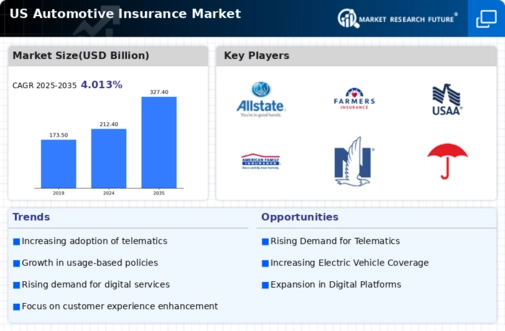Evolving Consumer Preferences
Consumer preferences are shifting in the automotive insurance market, driven by a desire for personalized and flexible coverage options. Many consumers now seek policies that align with their specific needs, such as pay-per-mile insurance or usage-based insurance models. This trend is indicative of a broader movement towards customization in various sectors. Insurers are responding by developing innovative products that cater to these preferences, potentially enhancing customer satisfaction and retention. As a result, the automotive insurance market may witness a transformation in how policies are structured and marketed, reflecting the changing landscape of consumer expectations.
Impact of Autonomous Vehicles
The emergence of autonomous vehicles is poised to reshape the automotive insurance market significantly. As self-driving technology advances, the liability landscape may shift from individual drivers to manufacturers and software developers. This transition could lead to a re-evaluation of insurance products and coverage types, as traditional models may no longer apply. Insurers are beginning to explore new frameworks to address the unique risks associated with autonomous vehicles. The potential reduction in accidents due to automation could also influence premium pricing strategies, making this a critical driver for the automotive insurance market.
Rising Vehicle Ownership Rates
The automotive insurance market is experiencing growth due to rising vehicle ownership rates in the US. As more individuals acquire vehicles, the demand for insurance coverage increases correspondingly. Recent data indicates that vehicle registrations have surpassed 270 million, reflecting a steady upward trend. This surge in ownership is particularly pronounced among younger demographics, who are increasingly opting for personal vehicles over public transportation. Consequently, insurers are adapting their offerings to cater to this expanding customer base, which may lead to increased competition and innovation within the automotive insurance market.
Economic Factors and Insurance Affordability
Economic conditions play a crucial role in shaping the automotive insurance market. Factors such as inflation, unemployment rates, and disposable income levels directly impact consumers' ability to afford insurance premiums. Recent economic indicators suggest a mixed outlook, with inflation rates hovering around 3.5% and unemployment rates at approximately 4.2%. These conditions may lead consumers to seek more affordable insurance options or to adjust their coverage levels. Insurers, in turn, may need to adapt their pricing strategies to remain competitive while ensuring that they can still cover potential claims. This interplay between economic factors and insurance affordability is a significant driver in the automotive insurance market.
Technological Advancements in Vehicle Safety
The automotive insurance market is increasingly influenced by advancements in vehicle safety technologies. Features such as automatic emergency braking, lane-keeping assist, and adaptive cruise control are becoming standard in new vehicles. These innovations are likely to reduce accident rates, which could lead to lower claims and premiums. According to the National Highway Traffic Safety Administration, vehicles equipped with advanced safety features have shown a reduction in crash rates by up to 30%. As a result, insurers may adjust their pricing models to reflect the decreased risk associated with these vehicles, thereby impacting the overall dynamics of the automotive insurance market.

























Leave a Comment